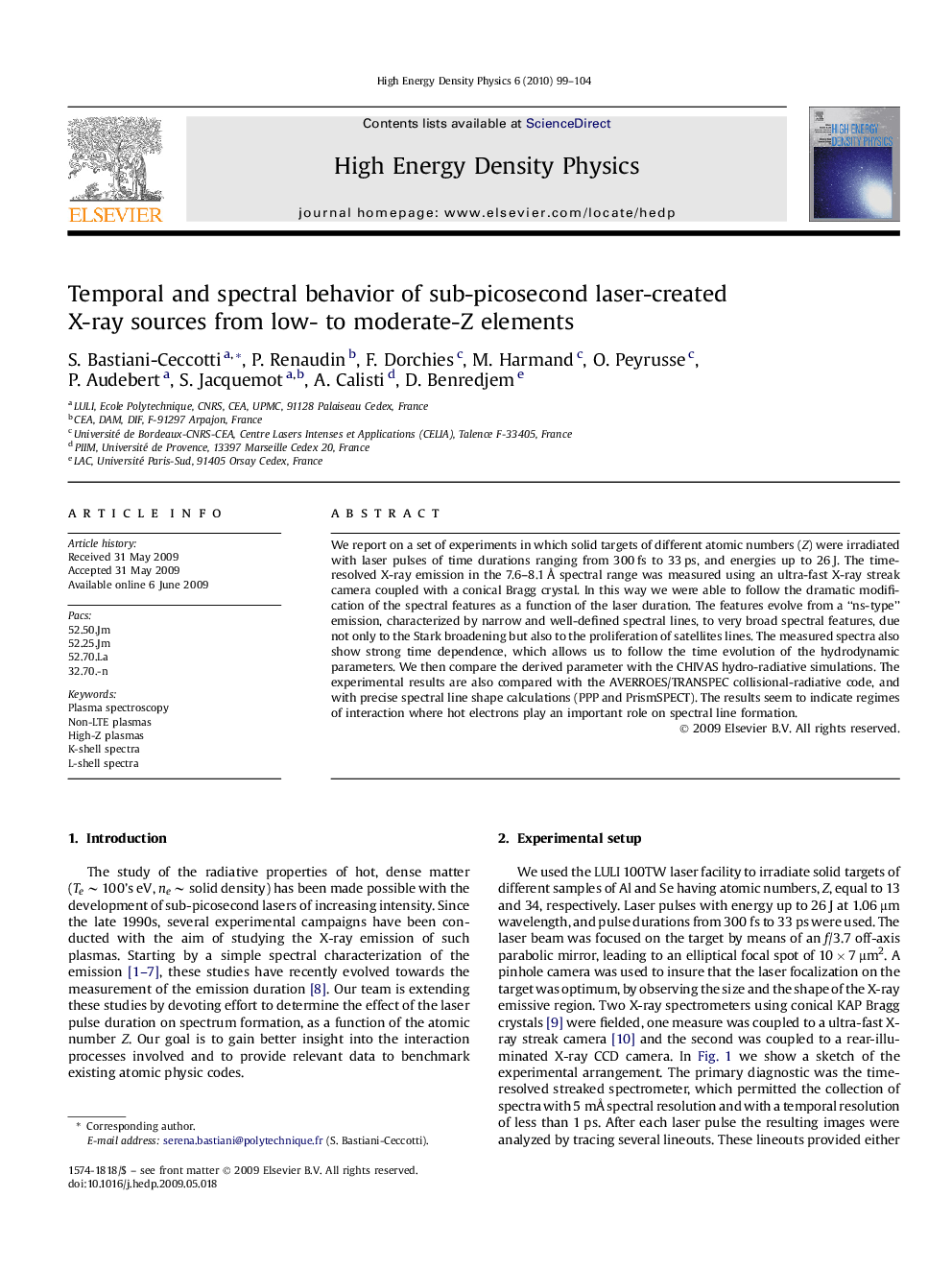| Article ID | Journal | Published Year | Pages | File Type |
|---|---|---|---|---|
| 1772639 | High Energy Density Physics | 2010 | 6 Pages |
Abstract
We report on a set of experiments in which solid targets of different atomic numbers (Z) were irradiated with laser pulses of time durations ranging from 300Â fs to 33Â ps, and energies up to 26Â J. The time-resolved X-ray emission in the 7.6-8.1Â Ã
spectral range was measured using an ultra-fast X-ray streak camera coupled with a conical Bragg crystal. In this way we were able to follow the dramatic modification of the spectral features as a function of the laser duration. The features evolve from a “ns-type” emission, characterized by narrow and well-defined spectral lines, to very broad spectral features, due not only to the Stark broadening but also to the proliferation of satellites lines. The measured spectra also show strong time dependence, which allows us to follow the time evolution of the hydrodynamic parameters. We then compare the derived parameter with the CHIVAS hydro-radiative simulations. The experimental results are also compared with the AVERROES/TRANSPEC collisional-radiative code, and with precise spectral line shape calculations (PPP and PrismSPECT). The results seem to indicate regimes of interaction where hot electrons play an important role on spectral line formation.
Related Topics
Physical Sciences and Engineering
Physics and Astronomy
Astronomy and Astrophysics
Authors
S. Bastiani-Ceccotti, P. Renaudin, F. Dorchies, M. Harmand, O. Peyrusse, P. Audebert, S. Jacquemot, A. Calisti, D. Benredjem,
